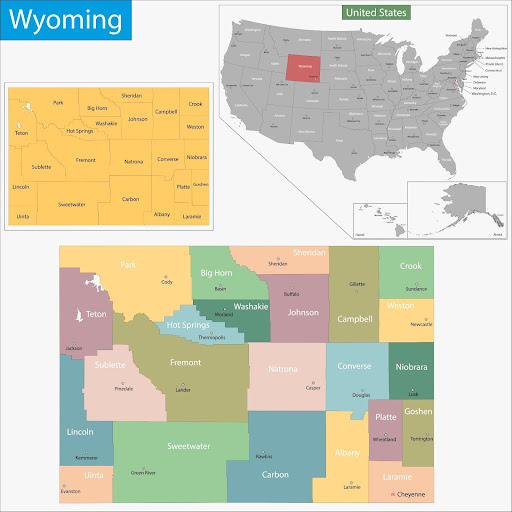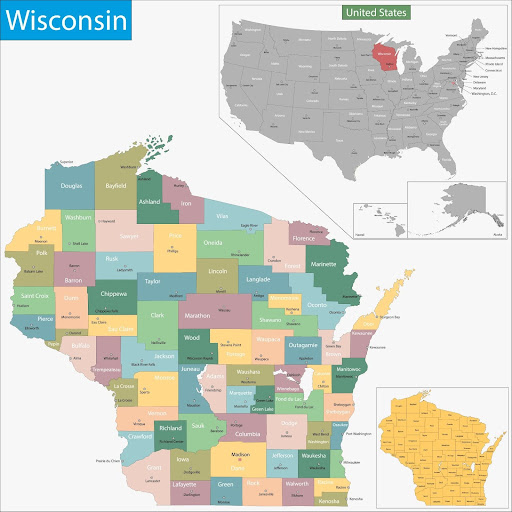Table of Contents
Montana burns on its own terms. One day, it’s a wind-scattered grassfire sweeping through the Hi-Line, the next, a high-altitude timber blaze chewing through beetle-killed lodgepole pine. For fire investigators, that range demands versatility and a serious grasp of local conditions.
In this guide on wildland fire resources in Montana, we offer boots-on-ground intel for fire professionals: where to track incidents, who to call, how Montana’s terrain behaves under fire, and where to plug into training and support networks.
To zoom out from local detail, use our wildland firefighting resources.
Live Incident Updates & Maps
Stay current with Montana’s rapidly shifting fire activity with this live tool:
State Overview
Montana is the fourth-largest state in the U.S., and every square mile brings its own ignition dynamics.
- Eastern Montana: Rolling plains, dry grasslands, and agriculture. Grassfires dominate, often wind-driven and fast-moving. Railroad sparks, farm equipment, and power lines are common ignition sources.
- Central Montana (Musselshell, Judith Basin, Little Belts): A blend of prairie, forest, and rangeland. Fires here often transition quickly from surface to canopy, especially in drought years.
- Western Montana: Heavily forested, mountainous terrain with steep slopes and ladder fuels. Wildfires here can go deep and high, with long-term smolder and reburn risks.
- WUI Zones: Western valleys and tourist-adjacent communities (Missoula, Kalispell, Bozeman) are under mounting pressure from growth, turning once-rural fire behavior into multi-structure investigation zones.
Wildfire Season Timeline
Montana’s fire season starts slow and ends hard.
- Early Season (May–June): Lightning ignitions begin in central and western forests. Eastern counties see grassfires from agricultural burns and wind.
- Peak Season (July–September): Fire behavior intensifies statewide, especially during dry lightning events. West side fires often smolder for weeks in deep duff.
- Late Season (October–early November): Chinook winds can fan holdovers or spark new ignitions. Investigators often respond to rekindle or slash pile burns that escaped during wind shifts.
Expect overlapping suppression and investigative demands, especially during regional red flag conditions.
Key State Agencies Involved
Montana’s wildland fire system is a complex braid of state, federal, tribal, and local agencies.
- Montana Department of Natural Resources and Conservation (DNRC): The state’s lead fire suppression and investigation body on state and private forest lands. DNRC Fire Protection provides engines, aviation, and fire investigation units across six land offices.
- Montana State Fire Marshal (Dept. of Justice): Oversees arson investigation and coordinates with local law enforcement on criminal ignition cases.
- USFS: Covers millions of acres across forests like Lolo, Flathead, Bitterroot, and Helena-Lewis and Clark. All fires on these lands follow USFS and NWCG protocols.
- Bureau of Land Management: Manages 8+ million acres. Investigators must work with BLM Fire and Law Enforcement teams.
- Tribal Fire Programs: Multiple sovereign tribal fire agencies (e.g., Confederated Salish and Kootenai, Blackfeet, Crow) manage suppression and investigation on tribal lands.
Local Wildland Firefighting Resources
Montana leans heavily on local capacity, especially in initial attack. Volunteer fire departments, county fire wardens, and other teams work together. Here’s a closer look at the resources available in the state.
List of Local/State/Federal Fire Response Agencies
Montana’s fire landscape is served by a multi-tiered network of responders:
- DNRC Fire Program Offices: Billings, Helena, Missoula, Kalispell, Dillon, and Lewistown, each support fire response and investigation.
- USFS Regional & Forest-Level Units: Each national forest has a dedicated fire management and law enforcement unit.
- BLM Districts: Miles City, Lewistown, and Missoula host BLM fire offices.
- Tribal Fire Agencies: Often full NWCG partners with engines, helitack, and investigation capability.
- Type 3 Incident Management Teams: Frequently activated mid-season, with authority to assign Fire Investigators (INV) or request external specialists.
Contact Numbers and Emergency Links
- To Report a Wildfire: Dial 911
- DNRC Fire Info: (406) 542-4300 | https://dnrc.mt.gov
- Northern Rockies Coordination Center (NRCC): (406) 329-4880 | https://gacc.nifc.gov/nrcc/
- USFS Fire & Aviation Northern Region: (406) 329-3511
- Montana DEQ Burn Permit Portal: https://app.egovmt.com/burnpermit
Training & Volunteering
Montana offers multiple NWCG-aligned training opportunities, from seasonal recruit programs to interagency academies.
NWCG-Approved Academies and Centers
- Northern Rockies Training Center: Offers year-round NWCG training including FI-210, S-290, and RX-301. Hosts interagency workshops.
- DNRC Fire Training: Regional offices deliver S-130/190, L-180, and customized fire investigation training for VFDs and agency partners.
- USFS Missoula Fire Sciences Lab: While more research-oriented, they host specialized investigator training sessions (especially for smoldering/subsurface behavior).
Volunteer and Seasonal Training Opportunities
- DNRC Seasonal Firefighter Program: Each spring, DNRC trains and certifies seasonal staff, many of whom serve in suppression and investigation support roles.
- VFD Training Support: County fire councils and DNRC often provide training stipends, PPE, and access to regional academies.
- Firewise & Mitigation Corps: Volunteer programs focused on prevention, but often intersect with investigator outreach and scene walkthroughs for education.
Stay Informed on Montana’s Wildland Fire Landscape
In Montana, local insight is half the investigation. Fire behavior here is shaped by terrain, fuel type, weather, and landowner history. You’re as likely to find your ignition source by walking a coulee with the landowner as you are by flying a drone. Build strong relationships with local fire wardens, DNRC area offices, and tribal dispatchers.
And stay sharp. Montana’s fire seasons are getting longer, and the lines between structural, WUI, and wildland investigations are blurring fast.
FAQs
How do I report a wildfire in Montana?
Dial 911 immediately. You can also contact DNRC or the NRCC directly for large-scale or federal fires.
Do I need a permit to burn in Montana?
Yes. Burn permits are required from March through October in many counties. You can apply online via the Montana Burn Permit Portal. Red flag warnings may override local permits.
Who investigates wildfires in Montana?
On state and private land, DNRC leads investigations. On federal land, it’s the USFS or BLM. In criminal or arson cases, the State Fire Marshal or local law enforcement may take the lead. Investigations on tribal land are managed by tribal authorities unless a federal partnership is in place.










